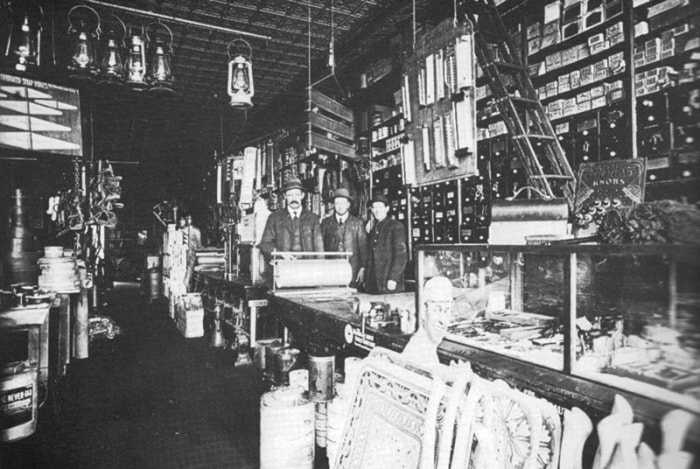By Herb Rees
At the turn from the 18th to the 19th century, the area which we now so proudly call home began to grow and prosper very quickly as immigrant families and individuals from across the oceans and North America invaded our province to get a piece of the new Alberta Advantage. Their gruelling trek into an unknown land was obviously a very scary experience, but once settled, they all worked very hard together and shared their skills to help establish, progress and slowly build the villages, the towns, the country districts, the cities and the great province that we now enjoy and benefit from so much each and every day.
The arrival of the Rees family
Among the early families who came into the Ponoka area were Joseph and Martha (nee Davies) Rees, who arrived in 1910 from South Wales with their children Herbert, David, Maggie and Tom. In the same year, they purchased the N.E. 1/4-34-42-25-W4 from W.L. Steele, then later in 1918 purchased the south quarter from Mr. Fraser. As well as all the many countless challenges that these hardy pioneers had been forced to face all year round, that same area of the Rees quarter had been ravaged by a tornado in 1911, which cut a 100 foot swath through the heavy bush, flattened buildings and killed cattle.
Their eldest son Herbert would develop an amazing skill at a very young age of tinkering with bits and pieces and inventing things, then in 1912, he would build a machine shop near the road on the farm. The very ambitious young man, who also held one of the few marine engineer’s certificates in the province, found himself too far from town to make a good profit, so Herb moved into Ponoka, where he built and opened the Ponoka Engineering Works in the south end of the community. His shop, which he faithfully operated until 1930 had the very first steel planeing machines, which, of course, Herb likely built himself.
His skills soon became very much in demand far and wide, and he would be involved a great deal in the initial planning and construction of the Provincial Mental Hospital. Along the way Herb would build an operational clock, a toy steam engine, a cannon of World War I vintage, as well as many other fine precision machines that were admired and enjoyed by residents of the rapidly growing community, districts, and a host of visitors. The Town of Ponoka also relied heavily on Mr. Rees to keep their early fire engines and other equipment in working order.
When George Gordon, the editor of the Ponoka Herald weekly newspaper received the exciting word at 2 a.m. on November 11, 1918 that the war was over, it would be Herb Rees who would immediately contact the Mental Hospital to immediately turn on the power to the town so that the gala celebration could begin. You see, in those days the town received all of its electrical power from the hospital, but that first contract agreed that it would be shut off for certain hours during the night. During World War I, Herb would serve as an instructor in airplane engines at Camp Borden, during which time Milt Stevens ran the popular Ponoka shop.
Herb’s magnificent steel cannon, which had a breech diameter of 1 ½ inches an overall length of four feet six inches and weighed 180 pounds, was fired for the very first time that afternoon, and found a permanent home next to the busy Canadian Pacific Railway Station. In 1922, when the Prince of Wales was passing through Ponoka on the train, Herb’s two sons Jim and Art decided to welcome the royal visitor by firing the cannon as a salute, shocking the huge crowd, and drowning out the music of the local community band. During the commotion that followed, Herb had to make a hasty explanation to the wave of RCMP and detectives who swiftly converged on the scene. In 1931-32, Herb and his wife and two sons left Ponoka after many successful and colorful years to join his father and mother Joseph and Martha in Vancouver. After writing this story I have one question: Whatever happened to that glorious cannon and some of the other great inventions of Mr. Rees and so many other great artists of our past? Hopefully some have been preserved for the pleasure of many generations in our museums or other public places, while others will eventually find their rightful place on our history honour roll.
The Ponoka Engineering Works continued to operate under the direction of Mr. Billy Bressuilik, another brilliant machinist who had joined Herb Rees in 1929 from Russia. A Mr. Jackson took over the business in 1938-39, after which it was occupied by a kindly Norwegian gentleman, Mr. Theodore Toft, who ran his blacksmith, lathwork and welding shop for many more years. Your Reflections in the Ponoka News will continue to salute our founding families, colorful individuals, businesses, and characters, along with historical events and milestones, as long as we continue to receive the great pictures, information, story ideas, and support from our faithful and always much appreciated readers from far and wide.
